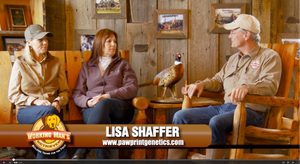If you already own a German shorthaired pointer (GSP) or if you are currently in the market for one, you likely realize the high level of intelligence and performance of this breed. With proper training, this high energy gundog can become a hunter’s best friend. Whether running long distance across rough terrain or diving into the water to retrieve a bird, the GSP is happy to work hard, please their owner and most of all, to hunt. Though a relatively healthy breed overall, like all dog breeds, sometimes GSPs can be born with inherited conditions that make life difficult for them or prevent them from doing the jobs that they were bred to perform.
Some diseases reported in GSPs such as hip dysplasia, entropion, and some cancers, are likely inherited though the specific genetic mutations associated with these disorders are currently unknown. On the other hand, GSPs also can inherit diseases caused by known genetic mutations. Knowledge of specific mutations and how the diseases are inherited, allows for laboratories such as Paw Print Genetics to develop tests to identify dogs that are either genetic carriers or are affected with a particular disease. Paw Print Genetics offers tests for three ...



